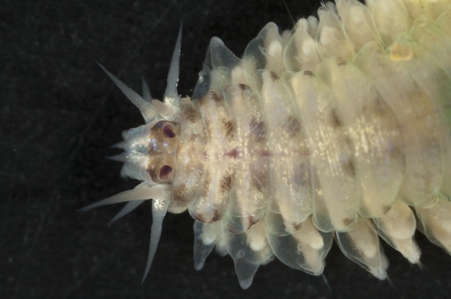General Description
In members of this genus there are robust, simple chaetae in which the articulation between shaft and blade is fused; these simple chaetae are usually dark enough to be seen under stereo microscope and are present in the middle buch of chaetae starting at about 12-15. Paragnaths are present, but only on the maxillary ring (closest to the jaws) of the eversible phayrnx. This species can be distinguished from the only other common member of the genus in southern Australia by having numerous (10-20 or more) dark paragnaths on each of Areas II and III of the eversible pharynx. The other common Nereididae species in southern Australian estuaries reaches a large size and has papillae, not paragnaths, it is Australonereis ehlersi. Simplisetia aequisetis occurs in estuarine conditions while Simplisetia amphidonta occurs in fully marine environments. Body up to about 4 cm long.
Biology
This is one of the most common estuarine polychaete species, being found in every estuary in southern Australia, often occurring in vast numbers.
Habitat
Estuaries, typically intertidal to depth of 3 m, occasionally to depth of 10 m.
Seagrass meadows
Soft substrates
Coastal shores
Distribution guide
South-eastern Australia, or south-western Australia.
Species Group
Depth
Shore (0-1 m)
Shallow (1-30 m)
Water Column
Max Size
4 cm
Commercial Species
No
Species Code
MoV 1061
Identify
Conservation Status
- DSE Advisory List : Not listed
- EPBC Act 1999 : Not listed
- IUCN Red List : Not listed




